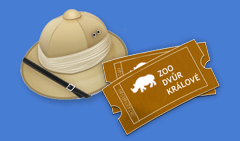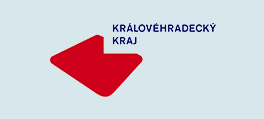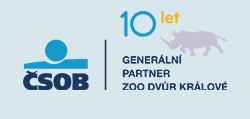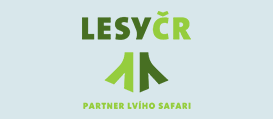The Carnivore House
With their acute senses, lithe bodies and elegance, carnivores have always had the power to attract. A running cheetah is one of the most impressive sights in the wild. By the way, one favoured activity by lions is lazing under trees, and this goes for the king of the jungle at the zoo. We can assure you it is quite normal.
At Dvůr Králové Zoo our area of specialisation is Africa. That is why we principally have carnivores from that continent. The meat-eaters' homes are the Felid House, Canid House and some smaller sites in the zoo's grounds.

Boris birthday
Date: 30.04.2009
This video puts paid to all those myths that a one-year-old tiger is like a kitten. Boris has just celebrated his first birthday, weighs almost 90 kg and can gobble up between 4 and 5 kg of food every day.

New man serval daddy
Date: 30.04.2009
While most serval males ignore their offspring in the wild, Dvůr Králové Zoo can boast something of a ‘new man’. Our serval male takes his fathering duties very seriously and takes great care of his four young.
ShowHideList of species
Carnivore
Amur tigers - 4 animals. Nina, the breeding female whose parents were wild, was born at Moscow Zoo in 2000. Boris, Nina's latest offspring from July 2007. Semjon and Euréka: the elderly couple. Fact: In 2005, 5 cubs were hand-raised as Nina did not show any interest in her young.
Persian leopards - PERL and DEINA, the breeding pair. Džórdž and Žeklin, raised by their mother, 15-months old. Facts: This is the largest leopard subspecies living in Western, Southern, and Central Asia. These are the fourth breeding pair we have placed together since the 1970s, when the zoo set up the Czechoslovakian collection. Since then, 25 animals have been raised.
Cheetahs - The first breeding success came in 1988, with 64 cubs having been raised prior to 2007. The breeding centre is not open to visitors. It has served for cheetah reproduction, and cubs have been supplied even to other Czech zoos.
Spotted hyenas - 2 animals.
Brown hyenas - 2 animals. Facts: This is the least known and rarest hyena species. They live in semi-deserts and coastal zones of Southwest Africa. Food: 80% consists of fruit, the remainder being insects and sea creatures washed up to beaches. They migrate for food to the seaside. In the wild, they use the same place to defecate for generations. They are only held rarely in captivity. At present, they can be only found at seven sites worldwide outside Africa.
African wild dogs - 4 animals. They live in packs. Our zoo is currently a top world captive breeder. 127 dogs have been raised so far.
Bat-eared dogs - An intriguing specialist feeder. Insects, particularly termites and parasites from the digestive tract of hoofed mammals like zebras, antelopes, etc. make up to 80 % of these dogs' diet. We have been holding a single pair since 1999 with 25 cubs born so far. (That is pretty good going). This genus is formed by a single species. They are closer relatives to the fox than the dog. Our zoo holds the nominal subspecies from South Africa. There are a total of 3 subspecies.
Black-backed jackals - 2 animals
Serval - 2 animals
The only small felid in our collection. The female holds a record in the number of raised young. She has managed to rear 31 cubs out of 32 born. All of them grew up in the company of the male.
Primates and rodents
Mountain paca - A South American large rodent. Currently, only 9 such animals can be found in 7 zoos throughout the world.
Common marmoset - A small primate and one of South America's clawed monkeys. They can be found on the island next to the canid house in the summer. We have had them since 2005, with 7 young animals so far reared. It is the most common species of all clawed monkeys. They are to moving to Water World before the autumn.
Golden-headed lion tamarin - Another clawed monkey, currently on display in the walkway of the carnivore house. They will also move to Water World soon.
ShowHideA brief history
One of the features of the oldest part of the complex is the Canid House, dating from 1970 and enlarged in 1984 to 1987. There are underground dens imitating a natural environment in each box of the house. Therefore, female dogs can deliver their offspring in holes like in the wild and feel safe, thus raising their cubs with success.
The first large felid house was constructed in the 1950s. Not only tigers and lions were held there, but even hyenas and leopards. In 1984, it was pulled down due to its poor condition. Next to it stood another old structure. It was a wooden house dubbed the woodshop that used to be home to leopards, cheetahs, hyenas, ocelots and other species. This was demolished in 1990.
The present Felid House was able to be erected thanks to a generous donation of 2 million crowns from Ms. Blažena Zedníková in 1989. Work got underway in 1990 and was completed in 1995, when it was formally opened on the occasion of a naming party for Skip, the first tiger born here.










